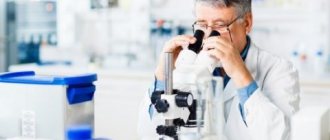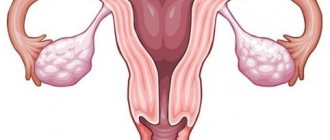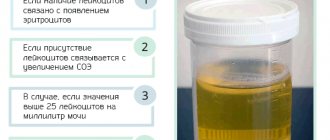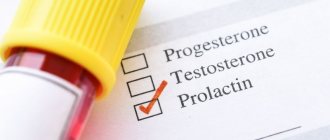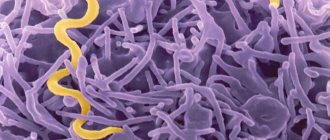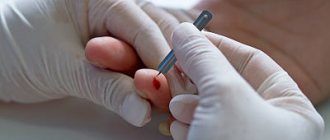Enzymes Indicators of lipid metabolism Indicators of protein metabolism Rheumatic tests Diagnostics of anemia Cardiac markers Indicators of residual nitrogen and purine metabolism Indicators of pigment metabolism Analysis for sugar Inorganic substances, macro and microelements Markers of osteoporosis
take a biochemical blood test for enzymes at the Health Laboratory CDC. We conduct research in a short time: in 2-3 days you can get the results. Thanks to the use of the latest equipment, we can guarantee the reliability of the results.
Biochemical blood test is one of the main methods of primary diagnosis of many diseases. It allows you to detect dysfunction of various organs and assess the deficiency of certain substances. The analysis determines the concentration and ratio of various enzymes. Depending on what disease the doctor suspects, a set of enzymes to be tested is selected. This profile is aimed at identifying pathologies of the liver, pancreas, and kidneys. Tests for these indicators can be taken at any office in our laboratory.
Before taking a biochemical blood test for enzymes, you must undergo preparation. The study is carried out strictly on an empty stomach, at least 8 hours must pass after the last meal. It is better to take tests in the morning, when enzyme levels are most objective. A few days before the procedure, you should avoid alcohol and fatty foods, high physical activity and severe stress. Following these measures will help you obtain the most reliable data possible.
A biochemical blood test for enzymes is highly informative. Based on the data obtained, the doctor can make a diagnosis, choose an appropriate treatment program or direction for further diagnostics.
Lipid metabolism indicators
Indications for laboratory testing of lipid metabolism are the diagnosis of the following diseases:
- atherosclerosis and its complications,
- IHD - coronary heart disease,
- myocardial infarction,
- stroke.
Increased concentrations of lipids in the blood significantly increase the risk of developing vascular complications in atherosclerosis. The level of substances largely depends on the quantities in which they are supplied with food. Therefore, to correct lipid status, a low-fat diet is often prescribed.
Analyzes allow you to determine the content of the main lipids - cholesterol and triglycerides. For transport in the blood, they bind to proteins - apoproteins. Such combinations are called lipoproteins. There are several types, differing in the level of triglycerides, cholesterol and apoproteins.
As part of a laboratory study of lipid metabolism, the concentration and ratio of all indicators of lipid status are determined:
- cholesterol,
- triglycerides,
- high and low density lipoproteins,
- apolipoproteins A1 and B.
A blood test is performed for diagnosis. Biomaterial is given on an empty stomach in the morning. Before the study, you must refrain from eating for 12 hours. In the morning you can only drink water. The blood collection procedure is painless and takes only a few minutes.
The study is carried out over 3 days. The results are available on our website after filling out a special form. You can also pick up the report in person or use a courier delivery service. The cost of the study is indicated on the website. Collection of biomaterial is paid separately.
Physiological role of oxygen
The oxygen content in the body of an adult is about 62% of body weight (43 kg per 70 kg of body weight).
Together with hydrogen, oxygen forms a water molecule, the content of which in the adult body is on average about 55-65%.
Oxygen is part of proteins, nucleic acids and other vital components of the body. Oxygen is necessary for respiration, oxidation of fats, proteins, carbohydrates, amino acids, as well as for many other biochemical processes.
The usual route for oxygen to enter the body is through the lungs, where this bioelement penetrates the blood, is absorbed by hemoglobin and forms an easily dissociable compound - oxyhemoglobin, and then from the blood enters all organs and tissues. Oxygen also enters the body in a bound state, in the form of water. In tissues, oxygen is consumed primarily for the oxidation of various substances in the process of their metabolism. Subsequently, almost all the oxygen is metabolized to carbon dioxide and water, and removed from the body through the lungs and kidneys.
Protein metabolism indicators
A biochemical blood test for protein includes the study of two main metabolic indicators:
- total protein,
- albumen.
The first allows you to evaluate the synthesis and breakdown of substances in the body as a whole. Its concentration may decrease due to:
- fasting,
- vegetarian diet,
- metabolic disorders,
- diseases of the digestive tract,
- neoplasms,
- significant blood loss,
- improper functioning of the liver and kidneys.
If a biochemical blood test shows a high concentration of total protein, this indicates:
- dehydration (for burns, gastrointestinal diseases),
- multiple myeloma.
Increasing values
Retention of nitrogenous wastes in the body:
- Kidney diseases: glomerulonephritis;
- pyelonephritis;
- amyloidosis;
- violation of the outflow of urine (urolithiasis, bladder tumor, prostate adenoma);
- acute renal failure.
Conditions associated with increased protein breakdown:
- Extensive burns;
- Excessive blood loss;
- Dehydration of the body;
- State of shock;
- Intestinal obstruction;
- Intense physical activity;
- High protein diet;
- Treatment with nephrotoxic drugs (tetracycline, etc.).
Relative hyperazotemia due to water loss:
- Profuse diarrhea;
- Increased sweating.
Analysis for protein fractions
Albumin is one of the fractions of total protein. A biochemical blood test for this indicator is prescribed if kidney and liver pathology is suspected. The reasons for the increase and decrease in concentration are the same as for the main substance. Albumin levels may also be reduced in pregnant or breastfeeding women or young children.
To determine the level of other specific proteins, you need to take blood tests to compile a proteinogram. The biochemical test allows you to evaluate the concentration of alpha, beta and gamma globulin fractions, as well as their qualitative composition. The level of these substances in the blood increases significantly during inflammatory processes or exacerbations of chronic diseases. Malignant tumors also cause an increase in their plasma volume.
A biochemical blood test for total protein and its fractions is taken strictly on an empty stomach. The day before the test, it is necessary to exclude fatty and heavy foods from the diet. Compliance with these requirements guarantees the accuracy and information content of the test.
Content:
- Urea is the main component of residual nitrogen
- Ammonia as a component of residual nitrogen
Residual nitrogen is nitrogen-containing compounds of plasma or serum that are not proteins or polypeptides and remain in the supernatant after precipitation of the proteins with trichloroacetic acid. Normally, the components of residual nitrogen are filtered in the glomeruli and some of them are not reabsorbed in the tubules. On this basis, determination of residual nitrogen components in blood serum is traditionally used to monitor renal function.
Useful clinical information is obtained by determining the individual components of the residual nitrogen fraction. The residual nitrogen fraction includes 15 compounds representing metabolic products of proteins and nucleic acids. Clinically significant residual nitrogen compounds are shown in the table.
Table - Clinically significant components of residual nitrogen
| Compound | Approximate plasma concentration (% of total residual nitrogen) |
| Urea | 45 |
| Amino acids | 20 |
| Uric acid | 20 |
| Creatinine | 5 |
| Ammonium | 1-2 |
Rheumatic tests
A blood test for rheumatic tests is usually performed as part of a comprehensive examination of the immune system.
During the tests, the amount of specific proteins that are markers of systemic or autoimmune diseases is determined. Rheumatic tests include blood tests to determine the following protein compounds:
- C-reactive protein,
- rheumatoid factor,
- ASL-O.
The level of C-reactive protein increases if there is an inflammatory process in the body. This test is carried out in cases of suspected chronic infectious diseases with a latent course. Taking a blood test is not recommended for people who have recently undergone surgery or been injured, as protein levels also increase when tissue is damaged.
A blood test for rheumatoid factor is prescribed for the differential diagnosis of rheumatoid arthritis. During the rheumatic test, the quantitative content of protein compounds in the serum is determined. A significant excess of the norm indicates a severe course of arthritis. High rheumatic test scores can also be a sign of connective tissue inflammation or viral infections.
Antistreptolysin-O is a marker of streptococcal infections. This protein is found in the blood of patients with meningitis, scarlet fever, and myocarditis. Streptococcus also leads to exacerbation of rheumatoid arthritis, so patients with this diagnosis should undergo this test regularly.
All blood tests for rheumatic tests are taken strictly on an empty stomach, after 8-12 hours of fasting. A few days before the test, you need to stop taking medications, give up alcohol and significant physical activity. The test will not be informative if you donate blood after an X-ray examination.
When and why do you take a test for residual blood nitrogen?
Nitrogen is part of many complex molecules and is therefore present in all living tissues. Residual blood nitrogen (RBN) is the nitrogen determined in the serum after the precipitation of all proteins contained in the blood. It is part of non-protein compounds, in particular urea, creatinine, amino acids, etc.
The total indicator of residual nitrogen is of significant diagnostic interest and is used to identify or confirm a large number of pathological conditions.
Diagnosis of anemia
CDC "Health Laboratory" diagnoses anemia using blood tests. On this page you will find a set of studies that you can take separately or together.
Anemia, or anemia, is a group of syndromes that have a common symptom: a decrease in the level of hemoglobin in the blood, usually with a simultaneous decrease in the number of red blood cells. Assessing the following indicators increases the accuracy of diagnosing anemia using blood tests:
- LVSS - ability of serum to bind iron; one of the main indicators used to diagnose anemia using a blood test ; changes with disturbances in microelement metabolism; in the case of iron deficiency anemia, the LVSS increases; if complex tests show a low level of serum iron, this indicates anemia, which is associated with chronic diseases, cancer, infections,
- vitamin B12 - important for the normal formation and maturation of red blood cells; The risk of cyanocobalamin deficiency is highest in vegetarians, since the vitamin comes with animal products, a decrease in concentration affects the decrease in the amount of folic acid,
- B9 - folic acid is also important for hematopoiesis: it stimulates the formation of erythro-, leukocytes and platelets, the compound enters the blood along with green vegetables, wholemeal bread and is partially formed by intestinal microflora, the reserve of acid in the liver is small, a month of stopping consumption is enough for a deficiency to occur source products, anemia develops after four months.
As part of the diagnosis, you can take a blood test for transferrin, ferritin, and erythropoietin. Choose tests according to the recommendations of your doctor. Only a specialist evaluates the results obtained. Diagnosing anemia using a blood test can be difficult, so the doctor evaluates clinical symptoms, comprehensive research data, and medical history.
A set of therapeutic measures to overcome the pathological process
Depending on the type and combination of symptoms of azotemia, the presence and degree of renal failure and the causes of disorders are determined. In the absence of renal pathology, treatment of the underlying disease is used.
Renal failure, both acute (reversible process) and chronic, is characterized by the presence of acute azotemia, failure of hemostasis, and deterioration of the body’s vital signs.
In addition to nephrological symptoms, with PN there is an increase in the number of signs of diseases of other body systems, which complicates treatment.
If azotemia occurs during acute renal failure, a set of pathogenetic therapy measures is carried out: plasmapheresis, replacement of filtered blood plasma with freshly frozen albumin through intravenous transfusions. Symptomatic therapy is added to them (often acute renal failure is accompanied by bacterial shock, disturbances in the hemodynamic function of the body, and oliguria).
In the case of azotemia against the background of chronic renal failure, therapy begins with the elimination of the renal pathology that led to failure. Etiological (in the case of kidney infections), pathogenetic treatment is used, adding therapy aimed at symptoms (with chronic renal failure, signs appear indicating the involvement of the cardiovascular system in the pathological process, skin diseases, encephalopathy).
Positive prognoses are given by regular courses of plasmapheresis and hemodialysis (“pulsing” blood through a device that performs the functions of failed kidneys and returning purified blood to the body), as well as kidney transplantation. Treatment of chronic renal failure and acute renal failure involves
Symptoms of high levels of protein breakdown products in the blood and a history of azotemia should alert you and force you to urgently consult a doctor for a comprehensive examination. After all, by acting ahead of serious illnesses, we simplify treatment and prolong our lives!
Cardiac markers
Cardiac markers are specific protein compounds found in muscle tissue. In heart disease, cells are damaged and released enzymes enter the blood. A large number of amino acids in the blood may also indicate the destruction of skeletal muscles and hidden bleeding.
Tests for cardiac markers are prescribed:
- in preparation for surgery under general anesthesia,
- patients with complaints of heart pain,
- for differential diagnosis of cardiovascular diseases.
Patients admitted with suspected heart attack are tested for myoglobin, troponin I and creatine kinase. An increase in the concentration of these proteins in the blood begins within a few hours after damage to the heart muscle.
If systemic heart disease or destruction of the vascular wall is suspected, a blood test is performed for the cardiac marker homocysteine. An increase in amino acid concentration indicates damage to the vascular epithelium. Indicators below normal are a sign of a lack of folic acid and B vitamins in the body.
Patients with ischemia or acute coronary syndrome should be regularly tested for troponin I. This specific protein is present only in the heart muscle and is released when its cells are damaged at the slightest level. An increase in the concentration of a cardiac marker indicates the risk of developing myocardial infarction in the near future.
You can undergo any test in our laboratory without a doctor’s prescription. All you need to do is make an appointment by phone. Test results for cardiac markers will be ready in one to five business days, depending on the number of indicators. You can obtain the data at the office where the survey was conducted or by email.
Basic information
Half of the non-protein nitrogen in the blood is urea, a quarter is made up of various amino acids. The remainder is divided between ergothioneine (8%), creatine (5%), uric acid (4%), creatinine (2.5%), ammonia and indican (0.5%) and other protein-free nitrogenous substances: polypeptides, nucleotides , nucleosides, bilirubin, histamine, choline, etc.
In the body of a healthy person, the content of residual blood nitrogen is relatively constant, i.e., fluctuations in this indicator are insignificant and depend mainly on the amount of protein supplied with food. Significant deviations in the analysis can be caused by a number of reasons, from a banal nutritional disorder to serious renal/liver dysfunction.
Azotemia
This is a condition characterized by an increase in the content of residual nitrogen in the blood. Depending on the causes of azotemia, it is divided into:
Retention azotemia is a consequence of insufficient excretion of nitrogen-containing substances from the body in the urine during their normal entry into the blood. In the renal form, the concentration of residual nitrogen increases due to inhibition (weakening) of the excretory (cleansing) function of the kidneys. At the same time, the increase in non-protein nitrogen occurs only due to urea, the content of which practically doubles (from 50% to 90%).
Retention extrarenal azotemia develops against the background of severe circulatory disorders, hypotension (low blood pressure) and decreased blood flow in the kidneys. Also, a similar condition is often observed when the outflow of urine from the kidney is impaired.
Productive azotemia is characterized by an excessive intake of nitrogen-containing substances into the bloodstream, which may be the result of increased breakdown of protein components of tissues in areas of inflammation, with extensive burns, severe wounds, cachexia (exhaustion of the body), etc.
Often the causes that provoke an increase in residual blood nitrogen are combined, then experts talk about a mixed form of azotemia.
Result
The norm for biochemical analysis of residual nitrogen is from 14.3 to 28.6 mmol/l.
An increase in residual nitrogen may indicate:
- acute or chronic renal failure;
- renal dysfunction;
- heart failure;
- dehydration;
- obstruction of the urinary tract;
- bleeding from the upper digestive tract;
- severe bacterial infections;
- decreased adrenal function (Addison's disease).
A decrease in residual nitrogen levels may be a symptom of:
- liver failure;
- viral, toxic and autoimmune hepatitis;
- celiac disease.
Important Features
Urea
It is the main product of protein metabolism (in quantitative terms), while it is 18 times less toxic than other nitrogenous substances.
Urea production occurs primarily in the liver and is regulated by N-acetylglutamate. Urea is found dissolved in the blood and is excreted by the renal tubules. In addition, small amounts of urea are also excreted in sweat. Therefore, urea levels may reflect liver and/or kidney function1.
In cases of renal dysfunction, 3 stages of azotemia are determined:
- very severe - the concentration of residual nitrogen in the blood increases to 50 mmol/l and higher (at a norm of 2.5-8 mmol/l). For a patient in this condition, the prognosis is extremely unfavorable;
- severe - the level of residual blood nitrogen reaches 35 mmol/l;
- moderate severity - the content of nitrogenous compounds increases to 16-20 mmol/l.
In some cases, to obtain more complete information, the method of calculating the ratio of blood urea to residual blood nitrogen (in %) is used. The calculation is performed using the formula:
Urea nitrogen / Residual nitrogen x 100%
Normally, this figure does not exceed 48%. In case of renal failure, the values can reach 90%, and in case of impaired urea formation in the liver, they can decrease to 45% or less.
Urea is used as a marker of postoperative stroke risk after cardiac surgery2.
Uric acid
It is the end product of the metabolism of purine bases and is considered one of the most important protein-free nitrogen-containing substances.
Normal uric acid values:
- in whole blood - 0.18-0.24 mmol/l;
- in serum - up to 0.29 mmol/l.
Hyperuricemia (increased uric acid concentration) is considered the main symptom of gout. In this case, the indicator may exceed 0.5-0.9-1.1 mmol/l.
Amino acids
Normally, the blood always contains a certain amount of free amino acids. Partially they come from outside with food, partially they are a product of protein breakdown. 1/5 of the free amino acids are glutamine and glutamic acid. The concentration of amino acid nitrogen in the blood is somewhat different from the amount of the component contained in red blood cells. This ratio varies from 1.52 to 1.82 and is almost always stable. This figure can only change under the influence of any pathological factors.
Preparation
A biochemical blood test requires special preparation.
- You need to take the test strictly on an empty stomach, after 8-12 hours of fasting, you can only drink still water.
- You should not change your diet for 3 days, but try to exclude fatty, spicy and fried foods.
- It is recommended to stop playing sports 3 days before the test.
- You should take a biochemical test in the morning, from 7 to 11 am.
- You should stop taking medications 3 days in advance; if this is not possible, notify your doctor.
- It is advisable to take tests in the same laboratory
Lowering values
- Liver dysfunction (impaired urea formation);
- Liver diseases: hepatitis;
- cirrhosis;
- acute hepatodystrophy;
- Edgar V Lerma, MD. Blood Urea Nitrogen (BUN). — Medscape, Nov 2019.
- Arnan MK, Hsieh TC Postoperative blood urea nitrogen is associated with stroke in cardiac surgical patients. — The Annals of thoracic surgery, Apr 2015.
- Danilova L.A., Doctor of Medical Sciences, Prof. Analyzes of human blood, urine and other biological fluids at different age periods, SpetsLit, 2014.
Pigment metabolism indicators
A biochemical test for bilirubin allows you to determine the condition of the liver and biliary tract. It is carried out according to the following indications:
- liver diseases,
- cholestasis,
- hemolytic anemia,
- diagnosis of jaundice of various origins.
As part of a biochemical blood test, two indicators are assessed.
- Direct bilirubin is synthesized from free bilirubin due to binding with glucoronic acid. By its concentration one can judge the condition of the biliary tract and liver and identify the causes of jaundice. The enzyme content increases when there is a violation of the outflow of bile, hepatitis and other pathologies. A significant release of bilirubin into the blood causes yellowing of the skin and sclera of the eyes, and darkening of the urine.
- Total bilirubin is a breakdown product of myoglobin, hemoglobin and cytochromes. It is formed in the cells of the liver and spleen and is one of the main components of bile.
There is a normal value for bilirubin content: indirect - up to 17.1 µmol/l, direct - up to 4.3 µmol/l. Exceeding the concentration may indicate the following violations:
- vitamin B12 deficiency,
- liver cancer,
- hepatitis, primary cirrhosis,
- formation of gallstones,
- Gilbert's disease
- poisoning - medicinal, alcoholic or toxic.
To make an accurate diagnosis, additional tests are prescribed.
Before taking a bilirubin test, you should undergo simple preparation. The procedure is carried out strictly on an empty stomach, at least 8 hours must pass after the last meal. The day before, give up alcohol and fatty foods, reduce physical activity and try to avoid stress. Following these recommendations allows you to obtain the most reliable data.
What is residual nitrogen in the blood
Residual nitrogen in the blood is the sum of all nitrogen-containing substances in the blood plasma after proteins have been removed from it.
When conducting biochemistry, the total indicators of all blood substances that contain nitrogen are assessed after all proteins have been extracted from it. This amount of data is called residual nitrogen in the blood. It is recorded after all proteins have been removed, since they are the substances containing the most nitrogen in the human body.
Residual nitrogen is determined in urea, uric acid, creatinine, creatine, amino acids, ergotianine, indican and ammonia. It can also be contained in substances of non-protein origin, for example, bilirubin, peptides and some other compounds.
Obtaining data on residual nitrogen can provide insight into the general health of the patient, as well as draw conclusions about the presence of a number of acute and chronic diseases, mainly related to the filtering and excretory function of the kidneys.
Sugar analysis
The laboratory of the CDC "Health Laboratory" offers
a blood test for sugar The main tests are collected in a special profile. You can choose individual tests or undergo a comprehensive study. Doctors recommend taking a blood and urine test for sugar in the following cases:
- diagnosis and control of diabetes mellitus types I and II,
- pathologies of the thyroid gland, pituitary gland, adrenal glands,
- liver diseases,
- determination of tolerance to glucose (a component of sugar) when testing patients at risk,
- obesity,
- diabetes during pregnancy.
A blood test for glucose concentration is the main test for diagnosing diabetes mellitus. This is what you should take first when the following symptoms appear:
- excessive urination due to an increase in the osmotic pressure of urine caused by glucose dissolved in it (in a healthy person, the analysis shows the absence or minimal level of this substance),
- constant thirst associated with fluid loss,
- unexplained hunger and weight loss due to metabolic disorders.
These symptoms develop acutely and are most typical of type I diabetes. Secondary signs:
- itching,
- dry mouth,
- muscle weakness,
- skin inflammation,
- visual impairment.
A blood test for glycated hemoglobin is indicated for long-term follow-up of patients to monitor treatment and the degree of compensation. The level of this substance reflects hyperglycemia - an increase in sugar, typical of diabetics.
An endocrinologist will explain to you the expediency of the research. If your doctor has prescribed tests for sugar and other substances to assess carbohydrate metabolism, we invite you to undergo a comprehensive diagnosis with us. We use modern equipment to obtain accurate results.
Characteristics and types of disease
In the human circulatory system, the content of nitrogenous elements involved in the metabolic process may increase; they appear from protein products, which leads to disruption of the excretory function of the kidneys - this is called azotemia.
The disease is characterized by:
- Increased urea in the blood.
- The rate of glomerular synthesis in the kidneys decreases.
- Serum creatine concentration increases.
Azotemia is divided into several types:
- Extrarenal - appears when blood circulation is impaired or with increased protein metabolism. The disease also develops in healthy kidneys.
- Obstructive - there is a failure in the outflow of urine. It can occur due to blockage or pressure on the bladders.
- Renal renal - occurs when there are problems with the excretory system of the kidneys.
- Chloriprivative - appears when the body loses chlorine. Most often occurs after severe bouts of vomiting.
- Retention – occurs when the body’s excretion of nitrogen-containing metabolites is impaired.
Types of azotemia
Prerenal azotemia:
- occurs if cardiac output decreases;
- blood enters the kidneys in small quantities;
- a blood test will show an index greater than 15;
- the index increases due to the filtration of creatine and nitrogen;
- Creatine and nitrogen levels increase due to hyperfusion, which reduces SFC.
Renal azotemia:
- one of the causes of uremia;
- Arises as a consequence of kidney problems;
- The index in the blood test will be less than 15;
- No nitrogen reabsorption is observed, and SFK is not increased;
- The ratio of nitrogen in urea and creatine increases; We present to your attention an article on how to lower urea in the blood.
- Nitrogen is excreted in the urine, although the blood ratio will be normal.
Postrenal azotemia:
- The normal outflow of blood is disrupted due to congenital anomalies, for example, due to vesicoureteral reflux, compression of the urethra by cancer cells, blockage of the ureter by stones, prostate hyperplasia.
- Obstacles arise in the path of urine;
- Hydronephrosis may develop;
- Index coefficients are greater than 15;
- Due to increased pressure in the nephron, nitrogen over-reabsorption occurs.
https://youtube.com/watch?v=wpZ1RVlx5ks
Inorganic substances, macro and microelements
A biochemical blood test for trace elements is a study that allows you to comprehensively assess the condition of the body, the functionality of systems and organs, identify symptoms of diseases or determine which vitamins and minerals a person lacks.
Most often, biochemical tests are taken to determine the content of vital (essential) elements in the blood:
- calcium;
- potassium;
- sodium;
- chlorine;
- magnesium;
- phosphorus;
- copper;
- gland;
- zinc
A blood test for microelements allows you to:
- reflect the functional state of organs and systems;
- identify an active inflammatory process;
- establish the fact of a violation of water-salt metabolism;
- identify rheumatic processes;
- correctly diagnose and prescribe effective treatment that will be effective;
- prevent the development of diseases.
Knowing the microelement profile of the body is important for the correct prescription of vitamin-mineral complexes, since some initially beneficial microelements in high concentrations become hazardous to health. An imbalance of vitamins and minerals can lead to:
- decreased immunity;
- diseases of the skin, hair, nails;
- allergies, bronchial asthma;
- diabetes, obesity;
- hypertension;
- diseases of the cardiovascular system;
- scoliosis, osteoporosis, osteochondrosis;
- blood diseases;
- intestinal dysbiosis, chronic gastritis, colitis;
- infertility, decreased potency in men;
- delayed mental and physical development.
You can take a biochemical blood test for microelements at any of our laboratory offices. The study should be carried out on an empty stomach; it is recommended to stop taking medications 3 days before. You can get additional information by phone.
Detailed description
Increased excretion of urea in urine: – pernicious anemia; – fever; – taking medications (salicylates, quinine); – hyperprotein diet; – postoperative condition; – hyperfunction of the thyroid gland; – thyroxine overdose.
Reduced excretion of urea in the urine: – nephritis; – uremia; – renal dysfunction; – acute liver dystrophy; – progressive cirrhosis of the liver; – taking anabolic hormones; – during the period of growth; – during pregnancy; – with a small amount of protein in the diet;
In clinical practice, the determination of urea in urine is used to monitor the state of anabolism and catabolism processes in the body.
In adults in a state of nitrogen equilibrium, the excretion of 500 mmol of urea (or 14 g of urea nitrogen) during the day corresponds to the consumption of 100 g of protein. It is especially important to determine the indicator in critically ill intensive care patients receiving enteral (tube) and parenteral nutrition in order to calculate the amount of protein drugs required by the patient.
Markers of osteoporosis
Laboratory diagnosis of osteoporosis includes tests for the following indicators:
- calcitocin is a hormone that maintains a constant level of calcium in bone tissue, preventing its destruction,
- parathyroid hormone - indicates the effectiveness of calcium metabolism, controls the flow of calcium and phosphate from the bones into the blood,
- Deoxypyridinoline (DPID) is the most specific marker of bone destruction; is the main material of collagen cross-links,
- Osteocalcin is a key non-collagenous bone protein; its content reflects the metabolic activity of osteoblasts,
- b-Cross Laps is a degradation product of type 1 collagen; an increase in its concentration indicates an acceleration of the process of collagen destruction.
A blood test is performed to diagnose osteoporosis. A comprehensive assessment of several indicators allows you to accurately diagnose and identify the causes of osteoporosis.
The disease is characterized by a violation of the structure of bone tissue, a decrease in bone mass. Accompanied by an increase in the activity of osteoclasts - cells that destroy bones. Osteoblasts - creating cells - do not fill the resulting cavities, as a result of which the tissue is not restored. Several functional techniques are used for diagnosis:
- bone densitometry,
- radioisotope bone scan,
- trepanobiopsy.
Laboratory diagnostics is the final stage of examination. It allows you to confirm the doctor’s assumptions and identify the conditions for the course of the disease.
You can get tested at any office of the Health Laboratory CDC. It takes about 7 days to diagnose osteoporosis. We will inform you additionally when the results are ready.
The role of nitric oxide in pathology
The enormous interest of researchers in studying the pathogenetic role of nitric oxide was initially due to new, extremely interesting publications indicating that the vascular relaxing factor is identical to nitric oxide, and numerous medicinal nitrates realize their angiotropic effect due to the release of nitric oxide from nitrates [20, 45, 53, 57]. Great difficulties in discovering the physiological and pathophysiological role of nitric oxide were associated with the fact that the nitric oxide molecule has an extra electron, which causes high chemical reactivity and a short half-life (from 6 to 30 sec) [53, 57].
In the short period that has passed since the discovery of the angiotropic function of nitric oxide, a huge amount of experimental and clinical material has been accumulated, which has made it possible to establish the substrate for the biosynthesis of nitric oxide, enzymes and isoenzymes involved in the biosynthesis of nitric oxide, the tissue specificity of nitric oxide isoenzymes, activators and inhibitors of nitric oxide isoenzymes , the molecular mechanism of the physiological and pathophysiological effect of nitric oxide, develop and put into practice drugs that activate and inhibit the function of various isoenzymes of nitric oxide synthase, establish the functional relationship of angiotensin II and nitric oxide in the regulation of vascular tone, as well as the conjugacy of the effects of superoxide radical and nitric oxide in implementation of oxidative stress [1].
Nitric oxide is an autocrine and paracrine mediator, since, being synthesized in any cells, it is able to influence metabolic processes both in these cells themselves and in those located nearby [2]. Nitric oxide, as a powerful endogenous vasodilator, takes part in the regulation of systemic and pulmonary vascular resistance and blood coagulation processes [34]. Nitric oxide functions in the central and autonomic nervous system. Via efferent nerves, this agent regulates the activity of the organs of the respiratory systems, gastrointestinal tract and genitourinary system [1]. Nitric oxide inhibits the proliferation of vascular smooth muscle cells [25, 39]. It is quite natural that a decrease in nitric oxide activity causes vasoconstriction and thrombosis [17].
Nitric oxide is synthesized from the guanidine nitrogen atom of L-arginine by nitric oxide synthase, which adds molecular oxygen to the terminal nitrogen atom in the guanidine group of L-arginine [17]. Nitric oxide synthase also produces the inactive end product L-citrulline, which is a marker of nitric oxide synthase activity [17, 57]. Nitric oxide synthase (NOS) includes three isoenzymes—type I, II, and III synthases [25, 39]. Based on their physiological properties, nitric oxide synthases are divided into constitutive (cSOA), including neuronal (type I) and endothelial (type III), and inducible (iSOA) [3, 8]. In the vascular endothelium, nervous tissue and platelets, cSOA predominates [8, 38].
Nitric oxide is irreversibly inactivated by reaction with hemoglobin (oxygenated and deoxygenated forms) in the lumen of the blood vessel, superoxide radical in the blood vessel wall [27, 42], or oxygen in free solution [63]. The reaction of nitric oxide with oxygen is accompanied by the formation of stable end products - nitrite and nitrate, which are indirect markers of the concentration of nitric oxide in the body [56, 67].
Determination of nitrite and nitrate, stable end products of nitric oxide, in blood and other biological fluids is carried out by various methods. When determining nitrite, the photometric method is used [65]. The total determination of nitrite and nitrate in blood plasma is also carried out using the photometric method, but nitrates are first converted into nitrites using a copper-coated cadmium column [43] or reductase [14]. Recently, high-performance chromatography [23] and capillary electrophoresis [15] have been used to determine nitrates and nitrites in biological fluids.
The modern understanding of the mechanism of implementation of the biochemical action of nitric oxide has been sufficiently substantiated for the vascular system. Thus, in response to physical and chemical stimulation in the vascular endothelium, the initial formation of nitric oxide increases for a short period with the help of SOA types I and III. An increase in the synthesis of nitric oxide by nitric oxide synthase occurs under the influence of acetylcholine, bradykinin, 5-hydroxytryptamine, and adenyl nucleotides [28, 38, 59]. The participation of nitric oxide synthase in vascular regulation is associated with the vasodilatory effect of these neurotransmitters, which stimulate the entry of calcium into the endothelial cell. An increase in the level of intracellular calcium is accompanied by activation, first of all, of the endothelial form of nitric oxide synthase by a calmodulin-dependent mechanism, which leads to the short-term release of small amounts of nitric oxide (picomoles). The latter diffuses into the cells of adjacent vascular smooth muscle and binds to specific receptor sites for heme, which is an integral part of the molecular structure of soluble cytoplasmic guanylate cyclase [3]. The binding of nitric oxide to the heme group of soluble guanylate cyclase induces a conformational change that displaces iron out of the plane of the porphyrin ring, thereby activating soluble guanylate cyclase. This increases the concentration of cyclic guanosine monophosphate (cGMP) in the target cell, which causes a physiological effect [10]. Thus, in smooth muscle cells, cGMP reduces the level of intracellular calcium, which leads to cell relaxation and causes vasodilation [24, 53].
Soluble guanylate cyclases are heterodimers of two different subunits: A and B. To date, two A and two B subunits have been cloned [52, 68, 69]. Other heme-containing proteins (aconitase and cytochromes of the mitochondrial electron transport chain) are also capable of reacting with nitric oxide, but the physiological consequences of this interaction have not yet been established [57].
The nitric oxide signal can be mimicked by organic nitrates (nitroglycerin), which are used to treat angina, myocardial infarction, and some forms of congestive heart failure [9, 61]. Nitroglycerin enters the cell, where it is transformed by a thiol-dependent enzyme system into nitric oxide and closely related compounds [22]. In contrast, vasodilators such as the newly developed STN-1 are converted to nitric oxide by non-enzymatic reactions [9]. This difference in the mechanism of action is fundamental in the development of tolerance during treatment with organic nitrates. Prolonged administration of nitroglycerin induces a state of tolerance. The mechanism of tolerance involves the initiation of anti-regulatory reflexes and metabolic changes in the target tissue, such that nitroglycerin loses its therapeutic effectiveness [9]. The mechanism of tolerance is not fully understood, but in vitro studies have shown that nitroglycerin rapidly depletes sulfhydryl groups necessary for its biotransformation to nitric oxide [37, 62]. Administration of N-acetylcysteine reverses nitroglycerin tolerance [37].
In addition to its central role as a vasodilator, nitric oxide functions as a neurotransmitter and plays an important role in long-term potentiation of neuronal memory and inhibits the adhesion of blood cells to the endothelium [11,35]. The biosynthesis of nitric oxide in the central nervous system and platelets is carried out by constitutive nitric oxide synthase (type 1 synthase). Aggregated platelets produce nitric oxide, which inhibits platelet aggregation [41]. Endothelial nitric oxide inhibits the action of vasoconstrictors (thromboxane A2 and serotonin) released from platelets [41]. This is due to the effect of nitric oxide on the signals of adhesion molecules as well as its ability to inhibit the expression of adhesion molecules and endothelial chemokines [55,64].
In essential and secondary hypertension, the function of the endothelium of resistive arteries is primarily affected, and the regulatory effect of nitric oxide on vascular tone and platelet adhesion to the vascular endothelium is reduced. Intravenous infusion of L-arginine lowers blood pressure in patients with both essential and secondary hypertension. At the same time, acute infusion of L-arginine reduces total vascular resistance and mean arterial pressure, increases heart rate, and increases cardiac output. These studies also found increases in plasma citrulline and urinary nitrate and nitrite, markers of increased nitric oxide production. Blood pressure decreased more in hypertensive than in normotensive patients after L-arginine infusion [30]. Interesting data were obtained when studying the effect of the nitric oxide precursor L-arginine on systemic and portal hemodynamics in 20 patients with cirrhosis. Intravenous infusion of L-arginine caused systemic vasodilation, which was more intense in patients with cirrhosis than in healthy controls. L-arginine increased hepatic blood flow [62]
The antihypertensive effect of angiotensin-converting enzyme inhibitors is closely related to nitric oxide function [28]. It is known that angiotensin converting enzyme is key in the formation of angiotensin II [4]. The biosynthesis of angiotensin converting enzyme is controlled by glucocorticoid receptors of vascular endothelial cells [5]. Naturally, the level of angiotensin II is also controlled by the glucocoticoid receptor mechanism [7]. The discovered close functional relationship of angiotensin II with the vascular relaxing factor, nitric oxide, may be indirect confirmation of the possible regulation of nitric oxide by the glucocorticoid receptor mechanism. This is supported by evidence that glucocorticoids inhibit the transcription of inducible nitric oxide synthase [5, 7]. Analysis of the inducing mechanism of action of angiotensin II on the level of nitric oxide, carried out using angiotensin II type I receptor blocker - losartan, L-arginine analogue - N(omega)-nitro-L-arginine-methyl-ester, calmodulin-W-7 antagonist, showed that angiotensin II activates endothelial calmodulin-dependent nitric oxide synthase [49]. In hypertension, ACE inhibitors prevent the worsening of nitric oxide-related vasodilation. Angiotensin-converting enzyme inhibitors enalaprilat and ramiprilat dose-dependently increase nitric oxide levels in the coronary arteries and aorta [70].
ISOA, which is calcium independent, was found in macrophages, neutrophils, cardiomyocytes, and hepatocytes [20]. The human iSOA gene is localized on chromosome 17 [16[. When iSOA is activated, there is a prolonged increase in the level of nitric oxide [8, 20, 54]. In this case, the production of nitric oxide can be 1000 times higher than the amount of nitric oxide produced by kSOA [20, 39, 50]. The inducing agents for iSOA are endotoxin, interferon-γ, interleukin-1 and tumor necrosis factor-a [19, 33, 40, 51]. Activated by interferon gamma and lipopolysaccharide, macrophages produce high concentrations of nitric oxide, which do not act through cAMP, but exhibit direct cytotoxic and immunogenic effects [58]. Under the influence of nitric oxide, sharp vasodilation occurs, vascular permeability increases, edema forms and the subsequent development of an inflammatory reaction [20, 29,44]. In this case, nitric oxide combines with superoxide and forms peroxynitrite anion (ONOO-), which induces DNA damage and mutation [3, 18, 32]. Peroxynitrite anion is involved in the implementation of oxidative stress [3, 18].
The pathogenetic mechanism of oxidative stress is characterized by a decrease in the level of ATP, an increase in the content of hypoxanthine, and the conversion of xanthine dehydrogenase into xanthioxidase, which forms pro-oxidants. Under hypoxic conditions, when blood flow is restored, there is an influx of molecular oxygen and calcium, which accelerates the explosion of oxygen-derived free radicals resulting from the action of xanthine oxidase and other oxidative enzymes, including inducible nitric oxide synthase. This oxidative environment generates lipid peroxides, which increase calcium permeability and activate phospholipase A2 [3]. In turn, these events trigger further expression of inducible nitric oxide synthase, adhesion molecules, and the release of platelet-activating factor, leukotrienes, thromboxane A2, and other inflammatory inducers. Neutrophils traveling in this unfavorable environment are activated, adhere to refused tissue, generate superoxide anions and nitric oxide, and form peroxynitrite, concomitantly inducing tissue necrosis [17, 32]. Consequently, nitric oxide is one of the key links in the pathophysiology of oxidative stress [3].
iSOA plays an extremely important role in the pathogenesis of many extreme conditions, including septic shock [31, 47]. Intense and prolonged activation of inducible nitric oxide synthase during septic shock is accompanied by a powerful increase in the biosynthesis of nitric oxide, which plays a dual role in the pathogenesis of septic shock. Thus, it has a protective antibacterial effect, but at the same time exhibits adverse effects, including persistent vasodilation, hypotension and hyporesponsiveness to vasoconstrictor agents [21]. In septic shock, a significant increase in the total serum concentration of nitrite and nitrate was found, which positively correlated with the concentration of endotoxin in the blood and negatively with hemodynamic disorders in these patients [26]. In children with septic syndrome, a marked increase in total serum nitrites and nitrates was noted (day 1 - 118±93 µmol/l; day 2 - 112±94 µmol/l; day 3 - 112±91 µmol/l; control - 43±24 µmol/l /l). With severe hypotension, children with septic syndrome showed higher levels of total serum nitrate and nitrite (145±97 µmol/l) compared to data obtained in children with septic syndrome without hypotension (82±76 µmol/l) [66]. In case of burn disease (total burn area 37±19%), the level of total serum nitrite and nitrate for 6 days was higher than in the control group. However, the maximum increase in stable end products of nitric oxide was observed in burn patients with sepsis (177 ± 131 μmol/L) compared to uninfected burn patients (83 ± 48 μmol/L) [48]. A significant increase in the level of the final product of nitric oxide, nitrite, in the blood is observed in patients with severe concomitant trauma [6]. The inflammatory response closely correlates with the level of nitric oxide end products during cardiac surgery [13] and acute colitis [36]. An increase in nitric oxide levels is characteristic of pathological pregnancy [65].
Apparently, an increase in the level of nitric oxide end products in the blood of patients with a severe general inflammatory response plays an important role in the release of interleukin-1 beta, interleukin-6, interleukin-8 and other inducers of the inflammatory response [26]. Determination of nitric oxide by the chemiluminescent method in the blood of patients with rheumatoid arthritis, characterized by a pronounced inflammatory reaction, indicates a multiple increase in its level (293±108 nmol/l) compared to the control (36±4 nmol/l). The level of nitric oxide, interleukin-6, and tumor necrosis factor-a was significantly higher in the active phase of rheumatoid arthritis than in the remission phase [60]. Systemic lupus erythematosus is also characterized by pronounced phases of inflammation. A study of the nitrite content in the blood serum of 46 patients with systemic lupus erythematosus indicates a significant increase in nitrite in the blood serum of these patients (37±6 µmol/l) compared to the norm (15±7 µmol/l). In these studies, the absolute values of the end product of nitric oxide in healthy individuals are significantly lower than in the studies of other authors. This is due to the fact that in this study the authors determined only nitrite in the blood serum [12].
Patients with uremia often die from spontaneous gastrointestinal bleeding during surgery or kidney biopsy. An increase in the level of nitric oxide may be one of the causes of spontaneous bleeding in uremia, since nitric oxide inhibits platelet aggregation and adhesion, and inhibition of inducible nitric oxide synthase in chronic renal failure completely normalizes the parameters of the blood coagulation system [57].
When treating diseases characterized by excess nitric oxide in the blood, complex therapy increasingly includes drugs that inhibit the activity of inducible nitric oxide synthase. Preparations of L-arginine analogues, such as N(omega)-nitro-L-arginine-methyl-ester (L-NAME), N(delta)-monomethyl-1-arginine (L-NMMA) have received clinical use [34]. Glucocorticoids (prednisolone, dexamethasone) inhibit the transcription of inducible nitric oxide synthase and reduce the content of final metabolites of nitric oxide in the blood, which, apparently, determines their high therapeutic activity in conditions characterized by hyperproduction of nitric oxide [7, 46].
Currently, there is an active search for selective inhibitors of inducible nitric oxide synthase, regulators of guanylate cyclase function and inducers of constitutive nitric oxide synthase, compounds that can prolong the effect of nitric oxide and ensure the transport of nitric oxide to various organs and tissues [2, 3, 7].
